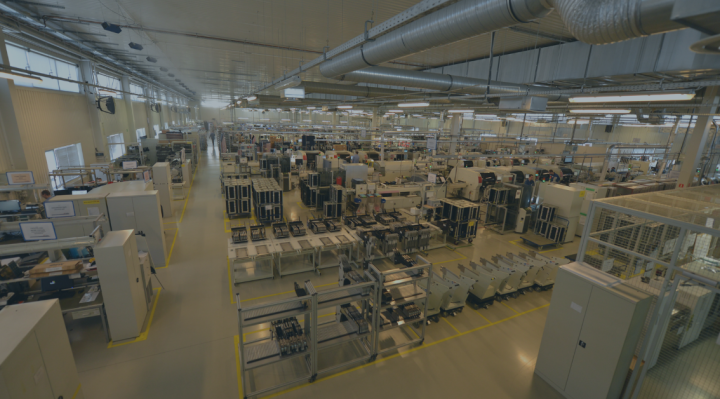PCB assembly (printed circuit boards) is a complex job which involves multiple process steps. Application of conformal coating is one of the many process steps which are performed on a PCB in order to protect it from environmental impact.
What is Conformal Coating
Conformal coating refers to a thin polymeric film which is applied to a printed circuit board to protect it against the elements of nature. Factors like moisture, dust, corrosion, high temperature, and mechanical abrasion can degrade the quality of a PCB over time. The polymeric conformal coating, typically 25-250um in thickness, guards the electronics assembly against these factors.
The name, “conformal coating” refers to the fact that the polymeric film conforms to the shape of the board and its components. Hence, all the exposed traces, component leads, solder joints, and metallic surfaces are protected against corrosion and abrasion. This ensures increased reliability and longevity of the printed circuit board.
Apart from its protective characteristics, conformal coating also enhances the electrical performance parameters of the PCB assembly. Since, conformal coating provides an extra layer of insulation therefore track spacing can be significantly reduced. This helps in shrinking the form factor of the board which is especially beneficial in space-constrained applications. Current bleeding between neighboring components is also decreased due to the extra insulation provided by conformal coating.
Applications and Use Cases of Conformal Coating
Electronic equipment and devices are widely used in all walks of life. Electronic devices can be classified in many different ways such as consumer, commercial, and industrial electronics. In commerce and industry, there are several sectors which can be considered as safety-critical. Therefore, the safety, reliability, efficiency, and performance of electronic equipment are of paramount importance in these sectors. Examples of safety critical applications include automotive, aerospace, military, power generation, medical, chemical processing, food processing, and maritime industries.
However, conformal coating is not only used in safety-critical applications rather it is used in almost all professional-grade PCBs. Consumer grade electronic devices such as TVs, DVD players, cameras, and laptops are non-safety-critical devices but the PCBs for these devices require conformal coating as well. Providing the consumer with reliable and durable devices is mandatory for the companies to stay competitive in the market space. Some of the specific applications of conformal coating are provided as following:
- LEDs are one of the most widely used components in electronic circuits. The performance and life-cycle of LEDs is highly affected by the factors like moisture, temperature, and UV light. The impact of these factors on LEDs can be greatly reduced with conformal coating without adding any additional weight or visual distortion.
- The electronic circuits used in medical applications are tightly scrutinized by relevant authorities due to their sensitive nature. The components and materials used in medical devices must be non-toxic and highly durable. The use of non-toxic conformal coating enhances the service life and durability of medical electronics. It can also withstand surgical sterilization procedures.
- Automotive electronics assembly needs to operate in harsh environments. These circuit boards are often subjected to extreme temperatures, water, salt, and lubricants. These materials can quickly degrade the performance of any electronic circuit therefore conformal coating is vital for the durability of automotive electronics. Apart from the PCBs, conformal coating is also applied to other automotive components such as sensors, gaskets, and seals.
- Electronic circuits in military applications are subjected to even worse operating conditions than automotive electronics. Military devices are very commonly subjected to extreme temperatures, pressures, stresses, moisture, dust, and abrasion. Therefore the need for conformal coating is even stronger in military electronic equipment.
- Aviation industry is a very important part of global transportation system. Trade, commerce, military, logistics, and air defense are highly dependent on aircrafts. The safety critical electronic systems of the aircrafts are designed to be highly reliable and durable. Therefore, the PCBs used in aviation industry must be treated with conformal coating in order to ensure high levels of safety and reliability.
Benefits and Viability of Conformal Coating in Electronics
The type and application method of conformal coating varies from one application to another. Application of conformal coating does add up an extra step in the PCB manufacturing process which results into higher costs. However, the cost is justified by the benefits which it offers. The cost of not adding conformal coating can result into increased repair costs, component replacements, and potential device failures. The cost is undoubtedly very important for the electronics manufacturers however the market reputation and future business prospects are even more important. Offering unreliable products to the consumers can seriously jeopardize the reputation of a company. Therefore, it is important for the companies to keep a healthy balance between cost savings and product durability.
It is already established that conformal coating is essential for the safety critical electronics assembly. However, due to its numerous advantages, it is also widely used on conventional PCBs. The benefits outweigh the costs big time. Some of the salient advantages of conformal coating include:
- Reduction in conductor spacing up to 80%
- Minimization of mechanical stresses and abrasions
- Resistance against chemicals and corrosives
- Resistance against humidity and moisture
- Increased temperature resistance
- Reduction of bleed and stray currents
- Increased equipment service life and durability
IPC Conformal Coating Standards
The conformal coating material used in military, automotive, aviation, medical, and industrial applications must meet certain specifications in order to be considered effective.
Although there are many different standards related to conformal coating, the most widely used standard is the IPC-CC-830B. This standard is mostly used by coating manufacturers, PCB fabricators, and OEM design firms. The IPC-CC-830B standard essentially deals with the quality consistency and performance capabilities of the conformal coating.
The IPC-CC-830B is the upgraded commercial version of the MIL-I-46058C military standard which became obsolete in 1998. The IPC-CC-830B standard classifies coatings into following categories: Acrylic, Epoxy, Silicone, Polyurethane, and Paraxylylene. The version C of the IPC-CC-830B standard is expected to include two additional coating categories: ultra-thin coating and Styrenic Copolymer. In order to obtain the IPC-CC-830B certification, the coating needs to pass the following tests.
- Visual inspection test
- UV Fluorescence test
- Fungal resistance test
- Flexibility test
- UL-94 flammability test
- Dielectric voltage test
- Moisture and insulation resistance test
- Thermal shock test
- Hydrolytic stability test
The IPC-CC-830B conformal coating tests ensure that the quality of the product is consistent, and that the consumer gets a well-tested and certified product.
Challenges of Applying Conformal Coating in Electronics Manufacturing
The conformal coating application method is as important as the material itself. The efficacy and durability of the coat largely depends on the quality and accuracy of the coating method. Even the best coating materials will provide inadequate protection if applied poorly.
Depending on the industry and application, the coating method can either be manual or automatic. Generally speaking, there are five main methods used for conformal coating. These are:
- Brush coating
- Aerosol coating
- Atomized spray coating
- Dip coating
- Selective coating
The manual coating methods are used in case of low volume production. Due to the involvement of human operators, this method is less accurate and quality variations are to be expected. Manual coating methods are more suitable for prototyping and low volume production.
For large scale production and high-performance PCB assembly, automated coating methods are employed. The coating machines can provide high degree of accuracy and uniform coating. There are two main methods used in automated conformal coating. The first method is dip coating in which the PCB assembly is submerged into a tank full of coating material. This process is quite slow as the dipping and withdrawing cannot be done quickly due to quality constraints.
Selective automated coating is the most efficient, productive, and accurate coating method for large scale production. Robots are employed for this coating method, which are capable of applying coating material to only selected parts of an electronics assembly.
Types of Conformal Coating
There are five main categories of conformal coating materials which are:
- Acrylics (AR)
- Urethanes (UR)
- Epoxies (ER)
- Silicones (SR)
- Polyparaxylylene (XY)
Each of one of these coating types has its own set of pros and cons. Therefore, the selection must be made according to the application requirements.
Acrylic coating offers the advantages of easy application, easy repairing, and low cost. Its disadvantages include medium chemical resistance, low medium abrasion resistance, and relatively average thermal characteristics, due to its advantages and disadvantages, acrylic coating is most commonly used for typical applications.
The pros of Urethane coating include high chemical resistance, high moisture resistance, high abrasion resistance, and durability. However, this type of coating is difficult to remove, requires long curing times, and gets discolored over time.
The pros of Epoxy coating include good dielectric properties, high abrasion and chemical resistance, and good thermal characteristics. The cons of this coating are: cracking due to vibration, shrinkage, and difficult repairing.
Silicone coating exhibits wide temperature range, flexibility and vibration dampening, good UV resistance, and high chemical resistance. Its major disadvantages include low abrasion resistance, out-gassing, and difficult reworking, many silicone coatings react with other chemical substances what limit its applications.
The pros of Parylene coatings include extreme temperature resistance, high dielectric strength, and very fast curing time. Its cons are difficult removal and complex vapor deposition method, its used mainly for special applications where usage of other types is limited.







